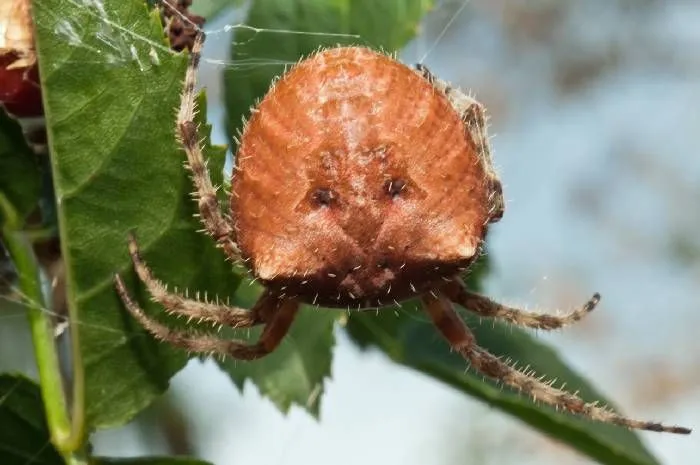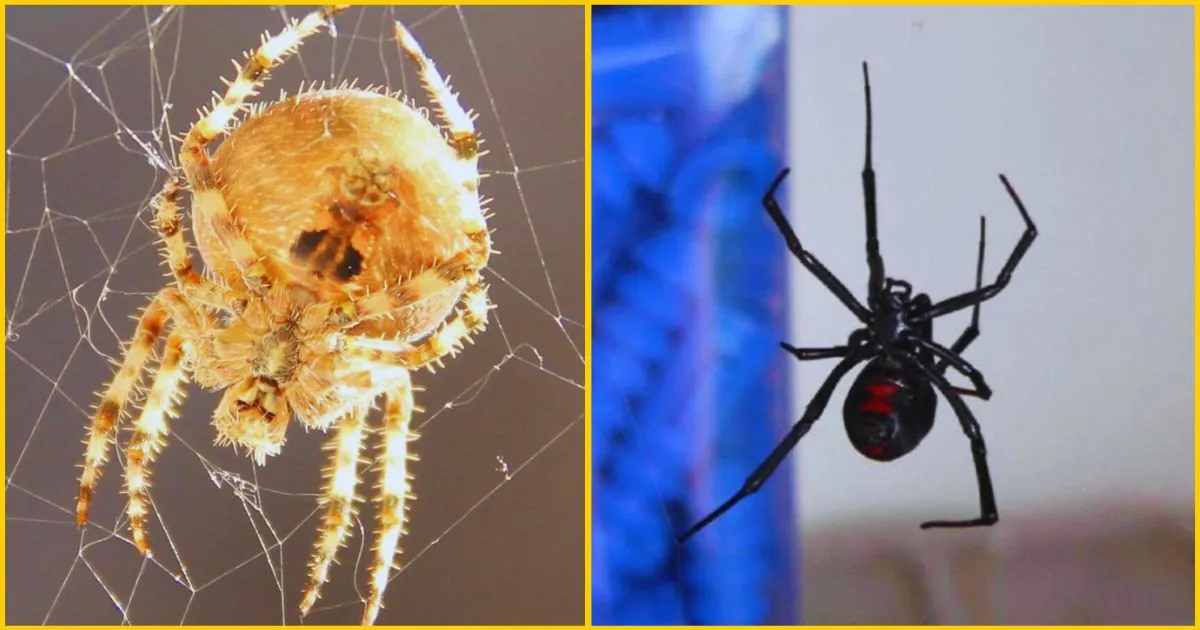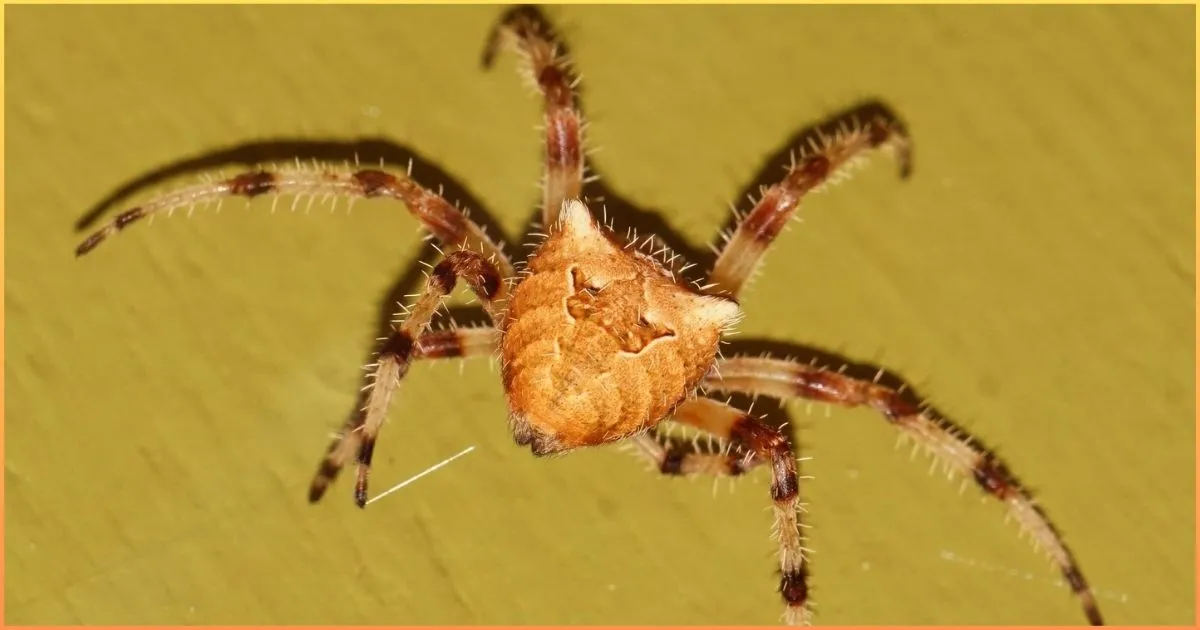Have you ever come across a spider that seemed to look back at you with an eerie, cat-like expression? Welcome to the captivating world of Cat-faced Spiders, nature’s own optical illusion. These eight-legged marvels have piqued the interest of both spider enthusiasts and casual observers alike. In this detailed guide, we’ll explore the fascinating world of Cat-faced Spiders, uncovering their secrets and highlighting their unique features. Whether you’re a seasoned spider expert or just curious about these strange creatures, your search for answers ends here. Get ready to embark on an exciting journey through the intricate web of knowledge surrounding these mysterious arachnids!
Table Of Contents
- The Cat-Faced Spider: A Closer Look
- Physical Characteristics
- Habitat and Distribution
- The Art of Web-Spinning
- Diet and Hunting Behavior
- Life Cycle and Reproduction
- The Role of Cat-Faced Spiders in Ecosystems
- Common Myths Debunked
- Threats to Cat-Faced Spider Populations
- Do Cat-Faced Spiders Eat Black Widows?
- Frequently Asked Questions (FAQs)
- Conclusion
The Cat-Faced Spider: A Closer Look

What exactly is a Cat-faced Spider? Scientifically known as Araneus gemmoides, this spider is part of the orb-weaver family. It gets its name from the unique markings on its abdomen that resemble a cat’s face, giving it its quirky nickname. However, there’s much more to these fascinating creatures than just their appearance.
Physical Characteristics
Let’s start with the basics. Cat-faced Spiders typically range in body length from 6 to 25 mm, with females usually being larger than males. Their coloration can vary, often featuring shades of brown, orange, or yellow. The distinctive “cat face” pattern on their abdomen is usually lighter in color, making it stand out against a darker background.
But there’s more to these spiders than just their appearance. They possess some impressive physical features:
- Strong silk-producing glands: Ideal for spinning their intricate webs.
- Powerful legs: Perfect for navigating their silken creations.
- Excellent vision: Equipped with eight eyes arranged in two rows, giving them sharp sight.
Habitat and Distribution
Cat-faced spiders are primarily found in North America, with a range extending from Canada down to Mexico. They’re adaptable creatures, comfortable in various environments:
- Gardens and parks
- Forests and woodlands
- Urban areas (often seen around buildings and structures)
These spiders prefer areas with sturdy supports for their webs, so you might spot them near trees, fences, or even the corners of your porch!
The Art of Web-Spinning
One of the most captivating aspects of Cat-faced Spiders is their skill in web-spinning. As members of the orb-weaver family, they craft circular webs that are true masterpieces.
Web Construction Process:
- Framework: The spider begins by constructing a basic frame using strong silk strands.
- Radial Threads: Next, it adds “spokes” that radiate from the center.
- Spiral Threads: The spider then spirals outward, connecting the radial threads.
- Sticky Silk: Finally, it coats the web with sticky silk to trap prey.
This entire process can take several hours, resulting in a stunning and highly effective hunting tool. These webs can span up to 2 feet in diameter—an impressive feat for such a small creature!
Diet and Hunting Behavior
Cat-faced spiders are patient predators, relying on their webs to catch unsuspecting insects. Their diet typically consists of:
- Flying insects (moths, flies, mosquitoes)
- Small beetles
- Other soft-bodied prey
Once an insect becomes ensnared in the web, the spider quickly moves to immobilize it with silk and deliver a venomous bite. This venom isn’t harmful to humans but is potent enough to subdue their prey.

Life Cycle and Reproduction
Understanding the life cycle of cat-faced spiders gives us a deeper appreciation for these remarkable creatures.
Mating Rituals
Like many spider species, the mating process of cat-faced spiders is a delicate dance. Males must approach females cautiously to avoid being mistaken for prey. They often perform a series of vibrations on the female’s web as a form of courtship.
Egg-Laying and Development
After successful mating, the female cat-faced spider will:
- Create an egg sac: This silken cocoon can contain hundreds of eggs.
- Guard the sac: The mother stays close, protecting her future offspring.
- Hatch spiderlings: After about two weeks, tiny spiders emerge.
The young spiderlings initially stay close to the egg sac but soon disperse by “ballooning” – using silk threads to catch the wind and float to new locations.
Seasonal Behavior
Cat-faced Spiders are most active during the warmer months, usually from late spring to early fall. As temperatures drop, adult spiders may seek shelter in protected areas or die off, leaving their eggs to overwinter. These eggs will hatch in the spring, continuing the cycle.
The Role of Cat-Faced Spiders in Ecosystems
Cat-faced Spiders play a vital role in maintaining ecological balance through:
- Pest control: By preying on insects, they help regulate insect populations.
- Food source: They serve as prey for birds, lizards, and other predators.
- Biodiversity: Their presence contributes to the overall diversity and health of ecosystems.

Common Myths Debunked
Myth 1: “Cat-faced spiders are dangerous to humans.”
Reality: Their venom is harmless to humans, and they are not aggressive.
Myth 2: “They invade homes in large numbers.”
Reality: While they may build webs near buildings, they prefer outdoor environments and don’t typically invade homes.
Myth 3: “All spiders with markings are cat-faced spiders.”
Reality: Many spider species have distinct markings; proper identification is important to distinguish them.
Threats to Cat-Faced Spider Populations
- Habitat loss due to urbanization
- Pesticide use in gardens and agricultural areas
- Climate change affecting their natural habitats
How You Can Help
- Create spider-friendly spaces in your garden
- Avoid using harmful pesticides
- Educate others about the benefits of these spiders
Do Cat-Faced Spiders Eat Black Widows?

The short answer is: generally, no. Cat-faced Spiders (Araneus gemmoides) do not typically eat Black Widows (Latrodectus species).
These two spider species have fundamentally different hunting strategies, habitat preferences, and prey selections that make predation between them extremely unlikely.
Cat-Faced Spider vs Black Widow Spider
Hunting Strategies and Web Design
Cat-faced spiders (Araneus gemmoides) are orb-weavers that construct large, circular webs spanning up to 2 feet in diameter. These intricate webs are built with sticky spiral threads designed to capture flying insects like moths, flies, and mosquitoes.
Black widows (Latrodectus species), on the other hand, are cobweb builders that create irregular, tangled webs. These messy, three-dimensional structures are typically built close to the ground in dark, secluded areas and are designed to catch crawling insects and arthropods.
Size Difference and Prey Considerations
While both species can vary in size, black widows are often larger and more robust than cat-faced spiders. Female black widows can reach 1.5 inches in length with their legs, while cat-faced spiders typically measure 6-25 mm in body length.
Cat-faced spiders primarily feed on:
- Flying insects (moths, flies, mosquitoes)
- Small beetles
- Other soft-bodied prey
Black widows primarily feed on:
- Flies and mosquitoes
- Ants and grasshoppers
- Beetles and caterpillars
- Cockroaches
Habitat and Behavioral Differences
Cat-faced spiders prefer open areas where they can build their webs across potential insect flight paths. They are active at night, emerging from their retreats to repair webs and hunt.
Black widows are reclusive spiders that prefer dark, concealed locations such as under rocks, in debris piles, or unused doorways. They build their webs near the ground and wait for prey to become entangled.
Diet Specifics
Cat-faced Spiders primarily feed on flying insects like moths, flies, and mosquitoes. Black Widows aren’t part of their usual diet.
Venom Potency
Black Widows are known for their potent venom, making them a risky meal for a Cat-faced Spider. Black widows possess potent venom that is reportedly 15 times stronger than rattlesnake venom. This makes them a risky prey item for other spiders, including cat-faced spiders, whose venom is relatively mild and primarily used for subduing small insects.
However, in the diverse world of spiders, there are always exceptions. In rare cases, if a Cat-faced Spider encountered a smaller or weakened Black Widow, predation could occur, but this would be an unusual event rather than a regular dietary habit.
It’s important to note that both Cat-faced Spiders and Black Widows play crucial roles in controlling insect populations in their environments. While they may not directly interact as predator and prey, they coexist as part of the larger ecosystem, each contributing to the balance of nature in their own unique way.
Frequently Asked Questions (FAQs)
Q1: Are Cat-faced Spiders poisonous?
A: While they have venom to subdue their prey, Cat-faced Spiders are not dangerous to humans. Their bite is rare and might cause mild discomfort, similar to a bee sting.
Q2: How long do Cat-faced Spiders live?
A: The average lifespan of a Cat-faced Spider is about one year, with females sometimes living slightly longer than males.
Q3: Do Cat-faced Spiders come inside houses?
A: Although they prefer outdoor environments, Cat-faced Spiders may occasionally wander indoors. However, they usually do not establish permanent residence inside homes.
Q4: How can I identify a Cat-faced Spider?
A: Look for the distinctive cat-face pattern on their abdomen, their relatively large size compared to other household spiders, and their circular orb webs.
Q5: What should I do if I find a Cat-faced Spider in my garden?
A: It’s best to leave them alone! They are beneficial for your garden, helping to control pest populations naturally.
Conclusion
Cat-faced spiders, scientifically known as Araneus gemmoides, are fascinating orb-weaver arachnids found across North America. These spiders:
- Are named for the cat-like pattern on their abdomen
- Typically measure 6.4 to 19.1 mm in body length
- Create large, circular webs up to 2 feet in diameter
- Prey mainly on flying insects, not other spiders
- Are harmless to humans and beneficial for pest control
While they don’t eat black widows, cat-faced spiders play a crucial role in maintaining ecological balance. Their unique appearance, impressive web-spinning skills, and contribution to natural pest management make them a captivating subject for both arachnid enthusiasts and casual observers alike.
